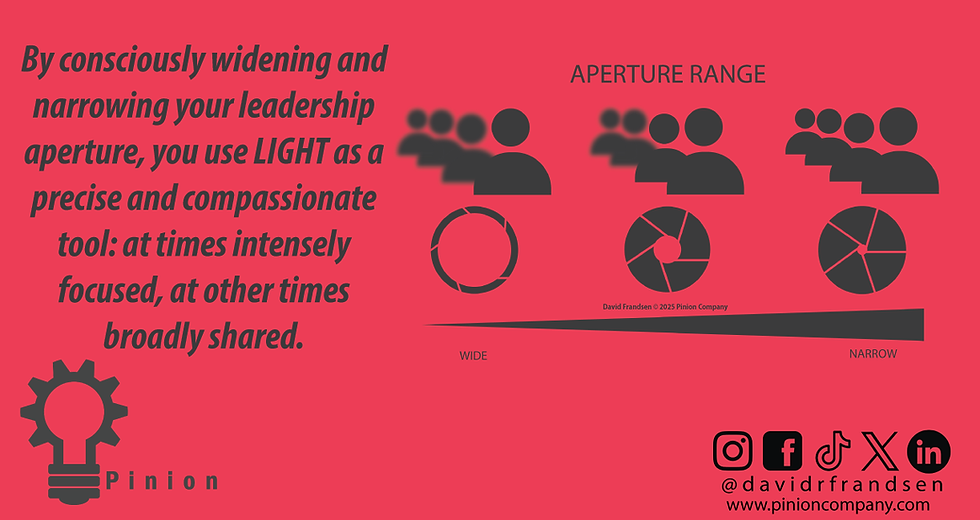Observe. Practice. Share.
- David Frandsen
- Oct 10
- 3 min read

The "Observe, Practice, Share" philosophy isn't just a catchy progression—it is a blueprint for building skill, confidence, and connection, whether on the job or out on the baseball diamond. Over the last few years, I have seen this model show up everywhere, but its real power comes when we make it intentional and part of our culture.
From Observation to Growth
For me, everything starts with observation. There’s something electric about watching someone who really knows their craft—a department head leading a new project, or a shortstop fielding grounders like it’s second nature. When we really pay attention, our brains begin to mirror what we see. Science calls this "observational learning"—it kicks our brains into rehearsal mode before we’ve ever taken a swing ourselves. It’s the necessary first step that makes everything else possible.
Practice: From Watching to Doing
But, of course, nobody ever mastered a skill by watching alone. When we practice—when we roll up our sleeves and try that new leadership lesson in a team meeting or step into the batter’s box—we move from theory to reality. Every rep, every attempt, every bit of honest effort wires the lesson deeper. This practice isn’t always pretty, but it’s how we bridge the gap between knowing and doing.
Share: Teaching as Transformation
Here’s where the magic happens: When we turn around and share what we’ve learned, the lesson doesn’t just stick—it grows legs. I’ve found again and again that presenting leadership concepts to my team is when I actually learn and internalize them the most. This isn’t a happy accident. Psychologists call it the "protégé effect," and science backs it up: preparing to teach others supercharges our own understanding, motivation, and confidence. Teaching isn’t just a generosity; it’s the fastest route to mastery.
One of our department supervisors took this to heart—now, each week, everyone on his (relatively inexperienced) team takes a turn presenting. The result? A room full of teachers and learners, every single week. It’s turned a group of new faces into a team that supports and sharpens each other. The lessons run deeper, and so does the trust.
On the Field: Baseball Parallels
This approach is just as alive at baseball practice. I’ll teach a principle—bat path, or pitching mechanics. Then, I ask players to try it, letting them experiment and adjust. Finally, when a player can explain the “why” and “how” back to me—or to another teammate—I know the lesson has landed. That’s when the team really starts to hum: everyone becomes both a coach and a competitor.
The Science That Underpins It
· Observational learning primes the brain through modeling.
· Practice (active engagement) strengthens neural pathways for retention and self-efficacy.
· Teaching others (the protégé effect) stimulates deeper processing, anticipation of questions, and greater clarity.
· In the workplace, peer-to-peer learning boosts engagement, morale, and knowledge transfer while building teamwork and a culture of openness.
Bringing It Home
"Observe, Practice, Share" isn’t just a method—it’s an invitation. It asks every one of us to pay closer attention, to turn learning into action, and to make our experience available to others. It’s how leaders grow, how teams get better, and how organizations evolve. The best part? The more we give away, the more we get in return. This is how skill becomes culture, and how every team member becomes a multiplier.




Comments